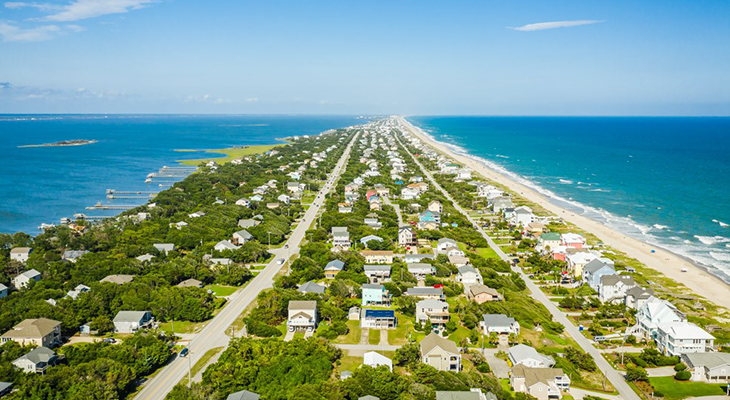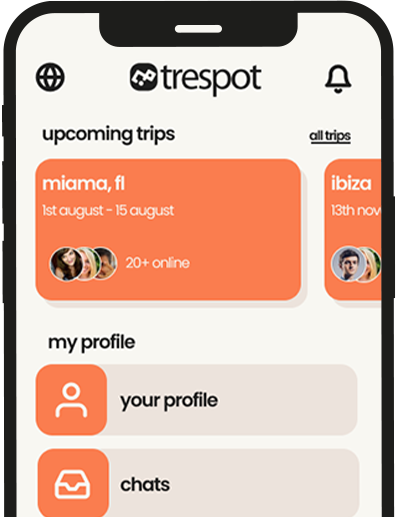Introduction
Choosing the best time to visit Outer Banks (OBX) depends on your travel style. Do you want warm‑water beach days, empty dunes and starry skies, or wallet‑friendly rentals and mellow meetups? Most guides spotlight spring and fall for balance—great weather, lower prices, fewer crowds—while summer offers the warmest ocean temps and classic beach energy. A smart plan considers water temperature, hurricane season, wildlife timings, surf & fishing conditions, and even night‑driving rules during turtle nesting.
In this guide, you’ll find a **month‑by‑month snapshot**, shoulder‑season hacks, and the local regulations that can shape your trip. Whether you’re a solo explorer, family planner, or organizing a **travel meetup**, you’ll leave with a clear, data‑backed answer to the **best time to visit Outer Banks**, plus sample itineraries and packing lists to match your dates.
OBX at a Glance: What “Best Time” Really Means
Short answer: If warm water and long beach days are non‑negotiable, aim for late June–September. If you value fewer crowds and better prices, choose March–May or September–November. Many locals and editors praise fall for its blend of pleasant weather and value, with October frequently called a sweet spot for surfing, dining, and easy reservations.
Deeper look: Summer delivers the postcard vibe—but rentals and restaurants are busiest. Shoulder seasons offer lighter traffic, smoother logistics, and friendlier rates—ideal for photography, wildlife watching, and **travel networking** without the summer rush.
Seasons in the Outer Banks (Spring, Summer, Fall, Winter)
Spring (March–May): Openings, Deals, Rising Temps
Spring is the Outer Banks “reawakening.” Attractions reopen, lodging is more affordable than summer, and winds favor kiteboarders and sailors. Daytime highs rise from the 60s into the 70s by May; the ocean lags but becomes tolerable for wetsuit dips. If you care about value and access over swimming‑warm water, **March–May** is often your best bet.
Why travelers love it: fewer lines, easier parking, open charters, and excellent birding. For small group trips or meetups, spring’s calmer pace helps with restaurant seating, private tours, and house rentals.
Summer (June–August): Peak Beach Weather & Plan‑Ahead Essentials
Summer is prime OBX: warmest ocean temps (upper‑70s to ~80°F), long daylight, and family‑friendly events. It’s also peak crowd and price season, so book early—especially oceanfront homes or larger properties. Expect traffic at arrival times; consider weekday check‑ins and early morning/late afternoon beach sessions to beat heat and crowds. If you want the full beach experience with the warmest water, **summer is your window**.
Fall (September–November): Fewer Crowds, Warm Seas, Events
For a balance of weather + value, **fall** is the insider pick. Ocean temps stay warm through September and often into early October, and surf quality improves as crowds thin. Editors frequently highlight October as a golden month—great for surfing and shoulder‑season pricing. Do note: **September** overlaps the peak of hurricane season, so book flexible rates and monitor forecasts.
Winter (December–February): Quiet Retreats & Dark‑Sky Stargazing
Winter flips the script—quiet beaches and reflective walks, with some businesses on reduced schedules. Air temps average in the 50s, the ocean is chilly, but skies can be crystal clear for stargazing. It’s a peaceful time for writing retreats, photography, and budget‑friendly escapes.
Month‑by‑Month Planner (At‑a‑Glance)
- Jan–Feb: Coldest air/water; quietest rates; outstanding winter birding (e.g., Pea Island). Great for solitude, shelling, and photo trips.
- Mar: Warming trend; more charters and attractions reopen; shoulder‑season deals begin.
- Apr–May: Reliable spring weather; wind sports, cycling, early paddling. May brings noticeably better water temps.
- Jun–Aug: Peak summer (book early); warmest seas; classic beach vibe; plan around traffic and reservations.
- Sep: Warm seas + fewer families after Labor Day; also peak hurricane season → use flexible bookings.
- Oct: Shoulder‑season sweet spot—pleasant days, thinned crowds, excellent surf and sunset sessions.
- Nov–Dec: Calmer late fall; cooler nights; holiday events; superb dark‑sky conditions.
Hurricane Season & Safety (Know Before You Go)
Official season: June 1–Nov 30. The statistical peak runs mid‑August to mid‑October with a high around Sept 10. That translates to higher weather volatility in late summer/early fall—not a reason to avoid OBX, just to travel smart.
- Book flexibly: favor cancel‑for‑any‑reason or weather‑friendly policies.
- Monitor forecasts: track NOAA advisories during your window.
- Build Plan B: sound‑side paddling, lighthouses, museums, Manteo’s historic district.
Pro tip: If you’re planning a surf or creator meetup in late September–early October, choose rentals with flexible change clauses and keep travel insurance in your toolkit.
Water, Surf & Wind Sports Calendar
Surfing: Fall is best—Atlantic swell quality improves, and water often holds in the 70s into early October. Summer offers smaller, fun waves; winter brings heavier wind/groundswells for experienced riders.
Kiteboarding/Windsurfing: Spring and fall winds are reliable, with large sound‑side playgrounds and lessons available across the islands.
Water temps: Roughly ~49–55°F in winter to ~78–80°F in late summer. Use this to pick wetsuits vs. springsuits vs. boardshorts—and to schedule mixed‑ability surf meetups in **September–early October**.
Fishing Seasons & Wildlife Moments
Fishing: Spring and fall shine for surf fishing (big red drum, bluefish, speckled trout). Offshore variety spreads across the calendar—yellowfin in spring/fall, mahi in late spring–summer, billfish in summer. Book charters mid‑week to avoid dock pressure and secure best crews.
Wildlife: Sea turtle nesting overlaps with late spring–summer and triggers **night‑driving restrictions** on certain beaches. Winter birding can be phenomenal along refuges like Pea Island, with vast waterfowl flocks—bring binoculars and keep respectful distances.
Crowds, Prices & Booking Strategy
The pattern: Summer occupancy, rates, and traffic peak; spring and fall have grown in popularity yet remain kinder on budgets and availability. Practically, that means lower prices and better selection outside late June–August—especially for large homes and meetup venues.
- Summer: Reserve months ahead. Target weekday arrivals. Consider splitting large groups across adjacent homes near shared beach access.
- Spring/Fall: Hunt for last‑minute deals, flexible terms, and off‑peak event spaces.
- Winter: Negotiate multi‑week stays for creative retreats and community sprints.
Where to Stay by Season (Town‑by‑Town Tips)
- Duck & Corolla (North): Family‑friendly, walkable/bikeable (especially Duck), luxury homes, calmer beaches—great for small family meetups.
- Kitty Hawk / Kill Devil Hills / Nags Head (Central): Efficient for first‑timers; close to piers, Wright Brothers Memorial, shopping and dining.
- Hatteras Island & Ocracoke (South): Surf and watersports hubs, quieter villages, strong fishing scene—ideal for surf/fish‑centric groups.
- Manteo (Roanoke Island): Historic, charming, non‑beach base with quick access to attractions—great for culture‑leaning trips and plan‑B days.
Events & Festivals That Shape “Best Time”
Spring welcomes reopenings and mild weather gatherings; summer brings the classic beach calendar; fall is rich with fishing tournaments, food and arts events—another reason locals love it. Scan official calendars when fixing meetup dates; a targeted festival can level‑up your itinerary.
Rules That Affect Your Plans (ORV, Night Driving, Fires)
Off‑road vehicle (ORV) beach driving: You’ll need a permit on Cape Hatteras National Seashore. Night‑driving restrictions protect sea turtles and nests. Generally: full night driving is allowed Nov 16–Apr 30; from May 1–Sept 14, night driving is restricted; Sept 15–Nov 15 is a transition as nests clear. Always check the current year’s compendium before you go.
Why it matters: If your OBX plan includes night fishing, Milky Way photography, or late‑evening dune drives, these rules directly affect access—secure permits and plan routes ahead.
Note: Beach fires require permits and are allowed only in designated areas; check local town or NPS rules for specifics.
Sample Itineraries (Shoulder & Peak)
A) Shoulder‑Season Long Weekend (Early October; 3–4 Days)
- Day 1: Arrive mid‑week; base in Duck or Nags Head; sunset sound‑side paddle; seafood dinner without peak waits.
- Day 2: Morning surf; lighthouse + Jockey’s Ridge dunes; evening meetup on the deck.
- Day 3: Charter fishing or Corolla wild‑horse tour; beach bonfire (permit‑compliant); stargazing session.
- Day 4: Brunch + craft markets; flexible departure to dodge traffic.
B) Peak‑Season Family Week (Mid‑July; 6–7 Days)
- Sat/Sun: Early check‑in; beach basics; grocery run.
- Mon: Early pier time; midday museums; late swim when the beach thins.
- Tue: Sound‑side kayak tour; ice‑cream crawl; sunset beach walk.
- Wed: Offshore charter (book months ahead).
- Thu: Day trip to Hatteras (surf) or Ocracoke (village vibes).
- Fri: Open day + golden‑hour group photos.
Packing Lists by Season
- Spring/Fall: Light layers, windbreaker, reef‑safe sunscreen, bug spray, compact wetsuit top for shoulder‑season dips.
- Summer: Sun shirts, UPF hats, reusable bottles, soft coolers, rash guards; snacks for traffic windows.
- Winter: Insulating layers, beanie, thermos; tripod and red‑light headlamp for stargazing.
Sustainability & Respect for Nature
Stay on marked paths, pack out trash, dim beachfront lights during turtle season, and observe ORV closures. These small choices support nesting success and protect the wild experiences we travel to the Outer Banks to enjoy.
Conclusion
If you’re chasing warmest water and classic beach bustle, then late June through September is your best time to visit Outer Banks—reserve early and plan for summer pricing. If you want mild weather, easy reservations, and meaningful time with friends or the travel community, aim for spring (March–May) or fall (September–November). Among those, October repeatedly emerges as a standout—balancing warmth, surf, and shorter waits.
Nature lovers and night‑sky chasers will appreciate winter’s calm, though hours are reduced and water is cold. Whatever your season, remember the practicals: hurricane awareness, ORV and nesting‑season rules, and flexible bookings. With smart timing, you’ll discover the OBX that fits your crew—family week, creator retreat, surf meetup, or foodie crawl.
Ready to organize a Trespot meetup? Pick your month, invite your city group, and share dates in your chat room—then build your itinerary with the month‑by‑month planner above.
FAQs — Best Time to Visit Outer Banks
October—warm days, smaller crowds, and solid surf—often wins for balance across weather, water, and prices.
September offers warm water and fewer families after Labor Day, but it overlaps the peak hurricane window. Book flexible rates and track NOAA forecasts.
Fall is widely regarded as best—warmer water lingers and swell quality improves. Summer has smaller, fun waves for beginners.
Not necessarily, but spring or fall will usually mean easier logistics, better venue availability, and friendlier prices for group stays.
Yes—ORV permits are required and night driving is restricted in nesting season; beach fires need permits and are allowed only in designated areas. Always check the latest NPS guidance.
References
- U.S. News Travel — Best Times to Visit Outer Banks
- Outer Banks Visitors Bureau (DMO) — Weather & Seasons
- NOAA — Hurricane Season & Peak Timing
- NPS Cape Hatteras — ORV Permits & Night‑Driving Rules
- Outer Banks Visitors Bureau — Occupancy/Visitation Reports
- Outer Banks Blue — Surfing by Seasons
- Condé Nast Traveler — Timing & Town Insights
- Seaside Vacations — Best & Worst Times to Visit OBX
- Tripadvisor Forums — Traveler Perspectives on Timing
- USFWS — Pea Island National Wildlife Refuge (Birding)
We synthesized overlapping guidance from official agencies (NOAA, NPS, USFWS), the local DMO, reputable travel publications, and traveler communities to create this practical, season‑by‑season OBX playbook.



